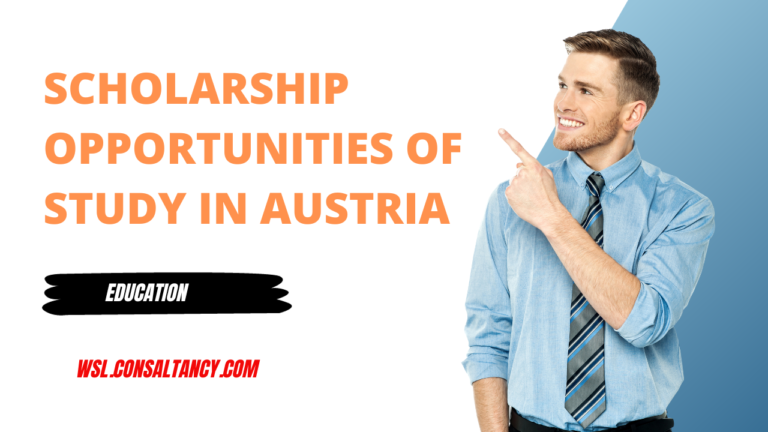Navigating the study in Austria Higher Education System
Introduction
Austria, nestled in the heart of Europe, boasts a rich cultural heritage and a strong commitment to education. To study in Austria its higher education system is renowned for its quality and accessibility, attracting students from around the globe. This article provides a thorough overview of the Austrian higher education system, shedding light on its structure, institutions, admission procedures, and the unique features that make it stand out on the international stage.

Structure of the Austrian Higher Education System
To study in Austria higher education system is characterized by its clear and well-defined structure. It comprises three main types of institutions: universities, universities of applied sciences (Fachhochschulen), and private universities. Each of these institutions plays a distinct role in providing diverse educational opportunities.
- Universities: Austria is home to several prestigious universities that offer a wide range of academic programs. These institutions focus on research and theoretical education, providing students with a solid foundation in various fields. Notable universities include the University of Vienna, Graz University of Technology, and the University of Innsbruck.
- Universities of Applied Sciences (Fachhochschulen): These institutions emphasize practical-oriented education and collaboration with industry partners. Fachhochschulen are particularly renowned for their hands-on approach to learning, making graduates well-prepared for the professional world. Examples of Fachhochschulen in Austria include FH Campus Wien and FH Joanneum.
- Private Universities: While less common, private universities in Austria offer specialized programs and often collaborate with industry leaders. These institutions provide an alternative for students seeking a unique educational experience. Webster Vienna Private University and MODUL University Vienna are among the notable private universities.
Admission Procedures in Study in Austria
Admission for study in Austria higher education institutions is generally merit-based, and entry requirements vary depending on the level of study and the specific institution. Here are the general steps and criteria for admission to study in Austria:
- Bachelor’s Programs:
- Prospective students typically need a secondary school leaving certificate or an equivalent qualification.
- Depending on the program, additional entrance exams or interviews may be required.
- Non-German-speaking students might need to demonstrate proficiency in the German language through exams like the TestDaF or DSH.
- Master’s Programs:
- A relevant bachelor’s degree or equivalent qualification is a prerequisite.
- Some programs may require a specific grade point average (GPA) or additional entrance exams.
- Language proficiency may be assessed, especially if the medium of instruction is German.
- Ph.D. Programs:
- Applicants usually need a master’s degree or equivalent in a related field.
- Research proposals and letters of recommendation are often required.
- Admission may also involve an interview with the prospective supervisor.
Unique Features of study in Austria
- Bologna Process Implementation:
- Austria has fully embraced the Bologna Process, which aims to create a standardized and compatible system of higher education across Europe.
- The system is organized into three cycles: bachelor’s, master’s, and doctoral degrees, making Austrian qualifications widely recognized and compatible with those in other European countries.
- Research-Oriented Approach:
- Austrian universities are known for their strong emphasis on research and innovation.
- Students have the opportunity to engage in cutting-edge research projects and collaborate with renowned academics in their respective fields.
- Student-Centric Environment:
- The Austrian higher education system prioritizes student well-being and engagement.
- Small class sizes and interactive teaching methods contribute to a more personalized and student-focused learning experience.
- Internationally Diverse:
- With many programs offered in English, Austria attracts a diverse international student population.
- This diversity enhances the cultural exchange and provides students with a global perspective on their chosen field of study.
Conclusion
In conclusion, the Austrian higher education system stands as a beacon of academic excellence and inclusivity. Its well-structured institutions, commitment to research, and student-centric approach make it an attractive destination for learners seeking a quality education. Whether pursuing a degree in the arts, sciences, or applied fields, students in Austria find themselves immersed in a rich learning environment that prepares them for success in their chosen careers. As a member of the European Higher Education Area, Austria’s commitment to the Bologna Process ensures that its qualifications remain internationally recognized, further contributing to the global appeal of its higher education system.





